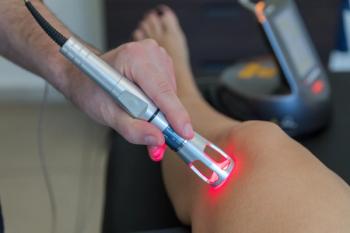
- Dermatology Times, January 2023 (Vol. 44. No. 01)
- Volume 44
- Issue 01
Review of Handheld Elastic-Scattering Spectroscopy Device on Melanoma Lesions
A poster presentation from the 2022 SDPA Conference reviewed an elastic-scattering spectroscopy device for melanoma detection.
Melanoma is one of the deadliest forms of skin cancer across the world due to the challenges in detecting it early on. Other common skin cancers include basal cell carcinoma (BCC) and squamous cell carcinoma (SCC). According to a poster presentation from the 2022 Society of Dermatology Physician Assistants Conference in Miami, Florida, 1 in 5 Americans will develop skin cancer by the age of 70, and more than 2 people die of skin cancer in the United States every hour. The study authors believe leveraging skin technology for skin cancer evaluation may reduce associated mortality and morbidity, avoiding unnecessary biopsies and decreasing healthcare costs.
The study authors reviewed an elastic-scattering spectroscopy (ESS) device, an optical tissue sampling technique that can distinguish between normal and abnormal tissue in vivo by recording photons scattered back from chromophores. A handheld, non-invasive ESS device may provide earlier detection of melanomas, and the study aimed to determine the sensitivity and specificity of an ESS device in skin lesions suspicious of melanoma.
The blinded, prospective study was conducted at 10 dermatology centers in the US and Australia. Patients with potentially malignant lesions were enrolled and evaluated by dermatologist investigators and the ESS device. The device results were not shared with the dermatologist investigators. High-resolution digital images and the patient’s clinical information of prior skin cancer history, risk factors, and physical examination results were recorded for each case.
In total, 440 lesions from 328 patients were evaluated by the dermatologist investigators, the ESS device, and dermatopathology. Fifty-four percent of patients were male, 98% were white, 96% were non-Hispanic, 53% had Fitzpatrick skin type II, and 20% had Fitzpatrick skin type III. Out of all lesions evaluated, 84% were flat and 96% were pigmented.
Biopsies found 114 high-risk lesions with 44 melanomas, 44 severely atypical nevi (SAN), and 26 non-melanoma skin cancers. According to the study, “Diagnostic sensitivity of the device was 96% (95% CI 0.893 - 1.000) for melanoma alone, 91% (0.831 - 0.953) for melanoma + SAN and 90% (0.831-0.847) for all high-risk lesions. Overall device specificity was 33% (95% CI 0.272-0.383). Dermatologist’s sensitivity was 91% (95% CI: 0.806 - 0.960) for melanoma alone, 72% (0.613 - 0.800) for melanoma + SAN.” The Area Under Curve score of the ESS device for melanoma detection was 0.76 compared to 0.75 from the dermatologists.
The study authors concluded that “the use of handheld ESS device by dermatologists, in addition to clinical evaluation, may improve melanoma detection. The device was able to identify 96% of melanomas when compared to biopsy results.”
The authors also believe that the ESS device’s simple and non-invasive approach may be useful for all levels of providers, not just melanoma experts or dermatologists.
Reference
Hartman R, Tepedino K, Fung M, et al. Validation of a handheld elastic-scattering spectroscopy device on lesions concerning for melanoma. Poster presented at the 2022 Society of Dermatology Physician Assistants Conference; November 17-20, 2022; Miami, Florida. Accessed: November 18, 2022.
Articles in this issue
almost 3 years ago
Management of Generalized Pustular Psoriasisalmost 3 years ago
Say No to Nasal Tanning Spraysalmost 3 years ago
Nutritional Supplements to Treat Hair Lossalmost 3 years ago
Exploring the Connection Between IBD and Psoriasisalmost 3 years ago
Vitiligo Treatment and Managementalmost 3 years ago
Study Finds JAK Inhibitors Safer Than Other Systemic Agentsalmost 3 years ago
Dermatology Drug Pipeline 2023almost 3 years ago
5 Simple Financial Tips for Dermatologists and Their Practicesalmost 3 years ago
Nail Problems? Easy Solutionsalmost 3 years ago
I Used a New Dermal Filler: How Can This Get Me Arrested for Battery?Newsletter
Like what you’re reading? Subscribe to Dermatology Times for weekly updates on therapies, innovations, and real-world practice tips.

















